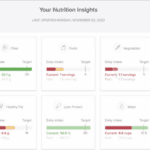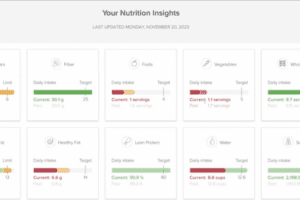As health systems grapple with market uncertainty, how will the current macroeconomic environment impact digital health and healthcare IT decision-making? How are AI and automation addressing healthcare labor shortage challenges? Capital One Healthcare analyst Don Hooker shared his perspective with Healthcare IT Today in the following interview.
 From your work with stakeholders, are you seeing any concerns regarding digital health point solutions?
From your work with stakeholders, are you seeing any concerns regarding digital health point solutions?
To set the stage, overall “healthcare IT” budgets appear to be stable at many healthcare provider organizations, but there are still a lot of concerns about how an uncertain macroeconomic environment might impact digital health and healthcare IT procurement decision-making. Specifically, healthcare providers continue to highlight challenges with labor and supply costs (shortages) as a source of operating margin pressure. In some cases, this is forcing them to be more selective with their software and services vendors.
In this environment, digital health point solution vendors face increased pressure to show their provider customers a hard-dollar and near-term ROI. Also, digital health point solution vendors may face pressure from provider organizations looking for ways to streamline their vendor relationships in order to gain better volume-based pricing. We have definitely seen a greater mix of revenue growth from cross-selling in recent quarters. Existing clients who have already realized success with a given vendor seem much more receptive in the current environment to choose to purchase add-on products from that same vendor. In addition to pricing, a lot of this has to do with trust.
Do you foresee these types of companies being successful in the current economic environment?
Demand for digital health and healthcare IT has shifted significantly over the past year towards near-term, hard-dollar value propositions. This includes tech-enabled optimization and revenue cycle management where vendors can directly write cost savings into their contracts and give customers explicit visibility to a near-term, hard-dollar ROI. As a simple example, revenue cycle management companies can take over the revenue cycle operation of a hospital and transition labor to offsite locations, creating immediate cost savings.
What can digital health point solutions do to improve their chances of success (e.g., pursuing M&A?)?
Consolidation strategies seem to make a lot of sense in the current marketplace given elevated customer focus on near-term ROI and streamlining vendors. Healthcare providers are having a hard time maintaining as many vendor relationships as they are, and, from what we’ve seen, they are looking for opportunities to rationalize vendors.
Also, organic cross-selling strategies seem to be working as well. We have seen a number of success stories of digital health/HCIT vendors being able to leverage their incumbencies to generate new streams of revenue and cash flow.
How are AI and automation addressing healthcare labor shortage challenges?
Health systems are using AI and automation to enhance patient outcomes, develop individualized treatments, increase efficiency and transparency, reduce costs and maximize reimbursement. For example, on the AI side, providers are combining data from a range of clinical, social and environmental sources to better understand the forces driving patient health and identify high-risk patients in need of additional support. When it comes to automation, we’re seeing patients entering their contact information on a health system’s online portal which allow providers to create automated appointment reminders and eliminate no-shows.
These advances are pointing us toward a new era of value based care. For example, the FDA has approved more than 350 medical devices enabled by artificial intelligence and machine learning – most of which are being used for medical image analysis. Physicians are increasingly turning to AI to pull interventional insights from diverse datasets to help them develop individualized treatment. These technologies are critical in realizing the promise of precision medicine. At the same time, one of the biggest focus areas of healthcare systems and providers is interoperability. Normalizing data and getting different systems to talk to each other is a critical first step before integrating AI and automation technology.













